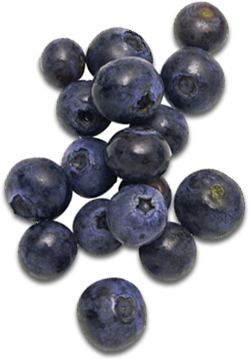no items to display
What the Heck Is Resistant Starch, and How Do You Get More of This Dietary Fiber in Your Diet?
We all know fiber is an important part of a healthy diet. It aids in digestion and elimination and strengthens heart health. Eating more plant-based foods — such as fruits and vegetables, whole grains, beans, and nuts — is the best way to increase your fiber intake. But there’s a specific kind of fiber that’s been gaining a lot of attention lately called resistant starch.
Resistant starch gets its name from the fact that it resists digestion. That means it passes through the digestive system intact, endowing it with a number of health benefits.
· Helps you go. Constipated? As a fiber, resistant starch provides bulk to stool, which gives it a laxative effect.[1] That’s important, because most folks don’t get enough fiber. In fact, the average daily intake for American adults is 15 grams, well short of the recommended 25 grams a day for women and 38 for men.[2] Juice Plus+ Complete shakes and nutrition bars are a good way to get extra fiber in your diet if you are one of those falling short of the recommendations.
· Feeds your gut. You’ve heard of probiotics, those live beneficial bacteria found in fermented foods that support immune and digestive health. Well, prebiotics act as food for probiotics, allowing them to multiply. When resistant starch ferments in the colon, it acts as a prebiotic, increasing numbers of probiotics.[3]
· Trims your tummy. Like all fiber, resistant starch helps you feel full, which may cause you to eat less, thereby aiding your weight loss efforts.[4]
· Balances your blood sugar. There’s also clinical evidence that resistant starch may reduce the risk of Type 2 diabetes by keeping your blood sugar from surging after a meal.[5]
· Multiplies your minerals. Finally, resistant starch increases the absorption of minerals, such as magnesium and calcium.[6]
There are several different kinds of resistant starch. Some occur naturally in foods when fiber is bound to indigestible plant cell walls in seeds, legumes, and whole grains. Other foods such as cornstarch contain amylose, which is resistant to digestive enzymes. Resistant starch can also form when carbohydrates such as beans, rice, potatoes, and pasta are cooked and then cooled. (The trick is you can’t reheat the food or the resistant starch will break down.) Finally, some resistant starches available commercially have been chemically modified to resist digestion.
Which foods contain resistant starch?
+ Bananas, slightly green
+ Barley
+ Cold beans, pasta, potatoes, and rice
+ Corn
+ Cornstarch, high amylose
+ Legumes
+ Lentils
+ Oats, especially raw
+ Peas
+ Potato starch
+ Seeds
+ Whole grains
Some people report digestive side effects such as gas or bloating when consuming large amounts of resistant starch, so when adding it to your diet, go slow and see what works for you. Also, avoid adding simple carbohydrates to your diet, such as white rice and pasta, because they can increase your blood sugar and are linked to weight gain. Same goes for potatoes, so while they are a source of resistant starch, don’t overload on them.
How do you make sure your family is getting enough fiber? Have you ever tried increasing your resistant starch?
References:
[1] Thompson LU, et al. In vitro digestion of RS4-type resistant wheat and potato starches and fermentation of indigestible fractions. Cereal Chem. 2011; 88(1):72-79.
[2] Zelman K, Magee E. Fiber, how much do you need? 2014 Aug 20. WebMD. http://www.webmd.com/diet/guide/fiber-how-much-do-you-need
[3] Martinez I, et al. Resistant starches types 2 and 4 have different effects on the composition of the fecal microbiota in human subjects. PLOS One 2010 Nov; 5(11).
[4] Zhang L, et al. Effects of dietary resistant starch on prevention and treatment of obesity-related diseases and its possible mechanisms. Biomed Environ Sci. 2015 Apr 28(4):291-7.
[5] Maki KC, Phillips AK. Dietary substitutions for refined carbohydrates that show promise for reducing risk of type 2 diabetes in men and women. J Nutr. 2015 Jan;145(1):159S-63S.
[6] Veromel M, et al. Energy value of a low-digestible carbohydrate, NUTRIOSE FB, and its impact on magnesium, calcium and zinc apparent absorption and retention in healthy young men. Eur J Nutr. 2004 Dec;43(6):344-52.






